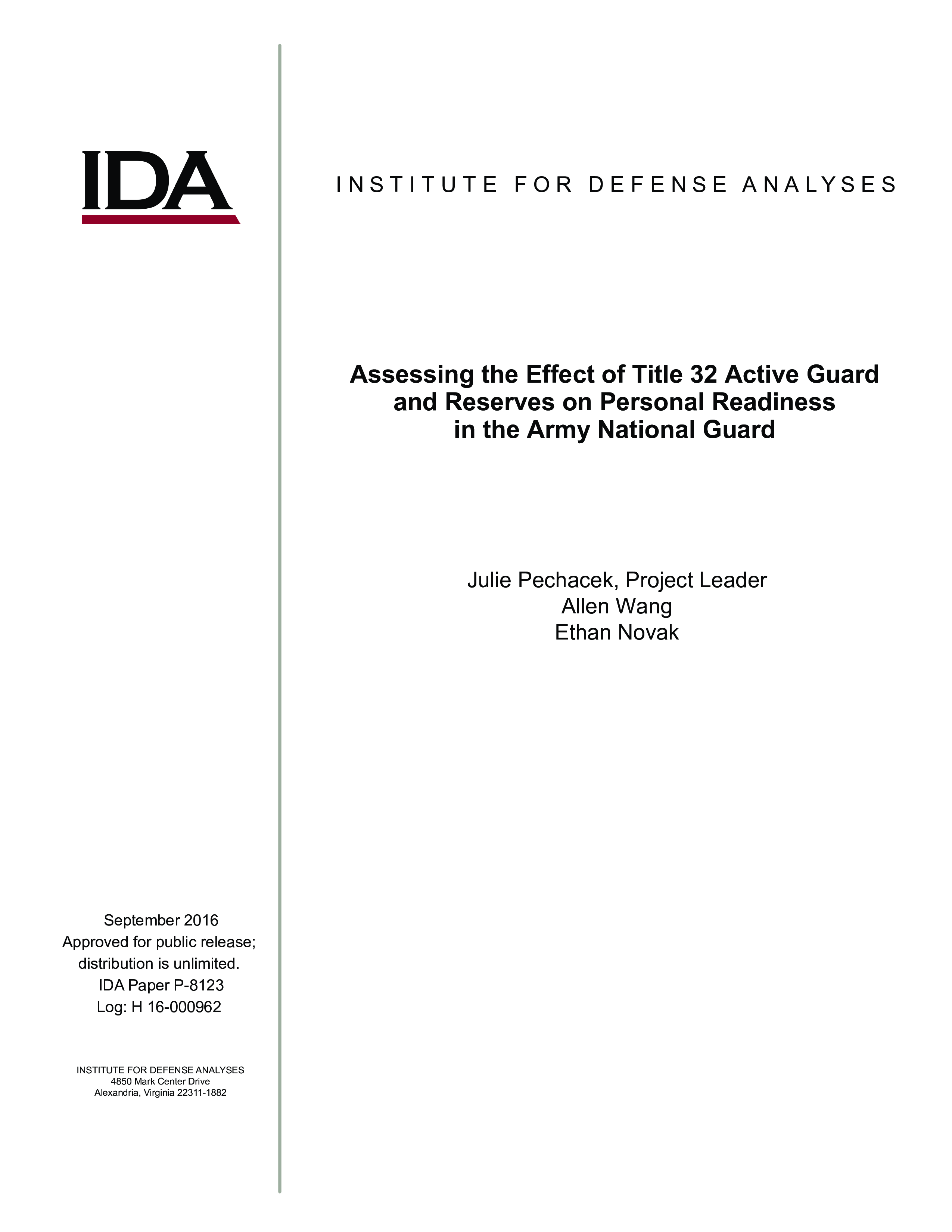We estimate the impact of Title 32 Active Guard Reserve soldiers (T32 AGRs) in the Army National Guard on the deployment availability of drilling soldiers located in the same battalion. We focus on Modification Table of Organization and Equipment (MTOE) units during periods when individuals and units are not mobilized in preparation for deployment, deployed, or recently returned from deployment. The common practice of moving troops between units correlates with T32 AGR exposure levels and personal readiness outcomes, and thus introduces selection bias at the unit level. We therefore develop an individual-level approach using 43 million monthly observations of ARNG members in MTOE units from 2001-2014. We calculate each individual’s cumulative T32 AGR exposure separately, and track investment levels as individuals move between units. We then estimate the impact of T32 AGR exposure on personal readiness levels, holding constant a wide variety of personal and unit characteristics. To our knowledge, this is the first study to quantitatively estimate the impact of T32 AGRs on personal readiness at the individual level. We find that same unit MTOE T32 AGRs have a persistent, robust, positive effect on personal readiness levels that diminishes as the ratio of T32 AGRs to total unit soldiers increases.

